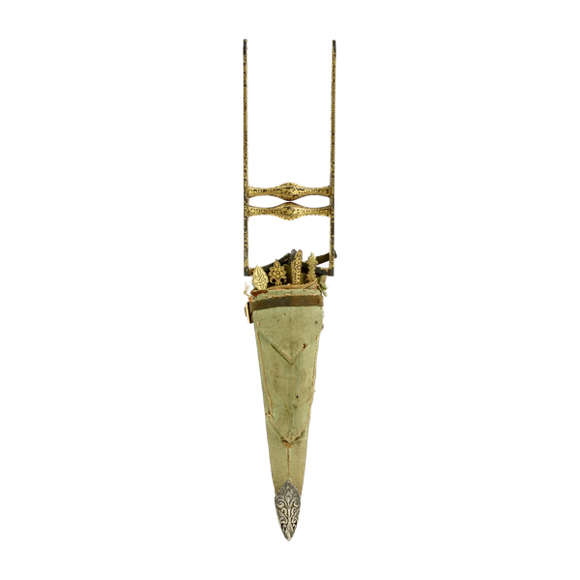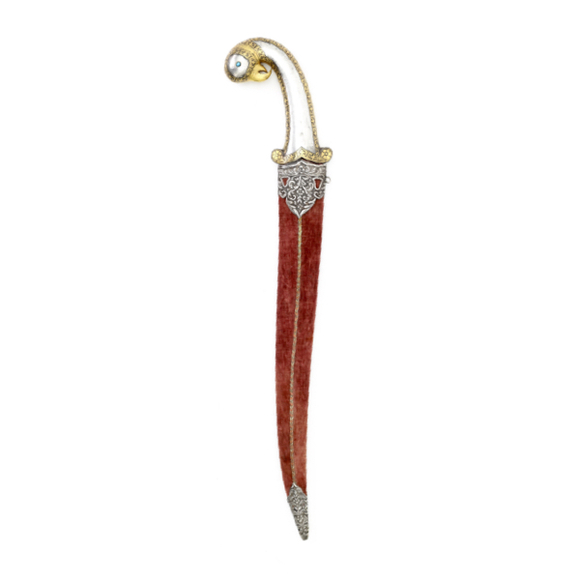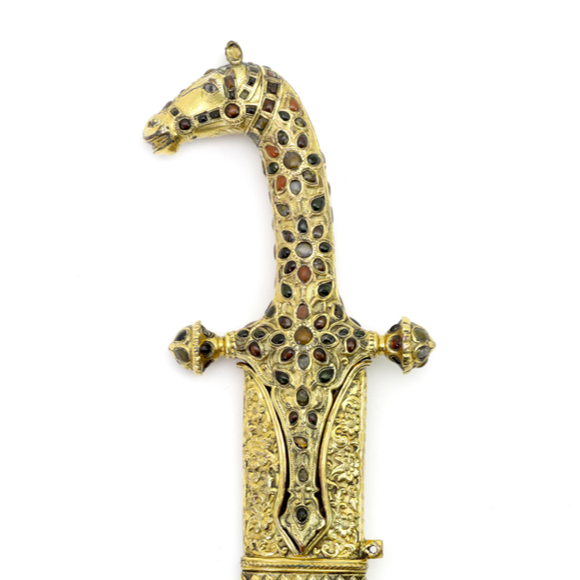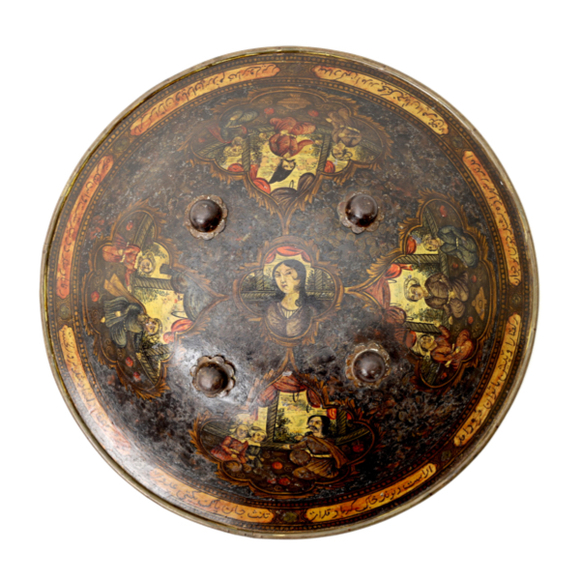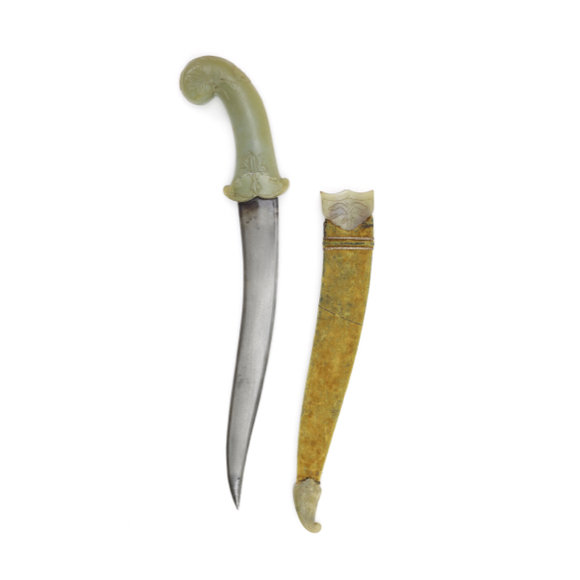With a fine wootz blade with a pronounced center ridge.

Width 151 cm
Height 71 cm
Ring diameter 4.5 mm
5100 grams
North India
Iron, brass, cotton, linen, velvet
18th to early 19th century
Description
A very fine mail vest made of unusually small rings with a diameter of only 4.5 mm. Tens of thousands of rings were constructed and linked to create it.
It has a pattern of golden lozenges, created by using gold plated rings. The rings are easily mistaken for brass rings, but high magnification reveals that the gold is worn off in places, showing different metal underneath. Copper in some places, iron in others.

High magnification of the rings, showing iron on the worn ones (left) and copper (right).
This patterning is also referred to as ganga jamni, work done in gold and silver. The Punjabi term refers to the mingling of the dark waters of the Jamna with the muddy water of the Ganges, two of India's greatest rivers.1
As the rings are very small and are not welded or riveted. The result is a very flexible mail shirt that weighs about half the weight of a regular mail shirt.
The collar and breast sections are made of fabric. The borders are light yellow linen, the lining is patterned cotton, and the outer fabric is a bright purple velvet, now worn. The fabric collar is probably a later addition. The bright purple dye is an aniline dye, also known as Mauve which was invented in England in the late 1850s and rapidly became popular across Asia. The fabric part is probably a late restoration.
Comparable examples
The Metropolitan Museum in New York has two vests in their collection that were made in a similar manner, with also unusually small rings that form patterns of contrasting colors:
Accession number 36.25.57 has the brass rings arranged in a way that it forms an inscription across the entire vest. It is inscribed in arabic with the date A.H. 1233 (A.D. 1816–17). The rest of the inscriptions are Islamic, referring to several notable people from the Qur'an and probably is talismanic in nature.
Accession number 36.25.22a is more similar to the shirt presented in this article, in that it has a repetitive geometric pattern all over the vest.
A helmet with coif of fine, patterned mail is illustrated in Hendley, as being from the armory of His Highness the Nāwāb of Tonk in Rajasthan. Here, the pattern is done in rings that are darker than the iron rings.
The best stylistic match is published in Egerton, it is the coif of a Sikh turban shaped helmet that has the exact lozenge pattern as this vest. It is described as:
"Helmet; small, shaped like a Turban with coif of mail; gold-damascened enrichments. Lahore." 3

The helmet in question. Catalog number 703 A T.
Notice the lozenges in the mail.
The book also mentions an armor with lozenged mail:
"Suit of armour, consisting of helmet, cuirass, armguards and shield of steel damascened with gold. Worn at the court of Ranjít Singh. Lahore. (...) Attached is a coif of mail falling in point on the shoulders and composed of brass and copper, the links alternating in the formation of lozenged designs." 4
A helmet with fine mail in a zig-zag pattern in the Royal Armories in Leeds and is believed to have been worn personally by Ranjit Sing. See accession number XXVIA.36.
And finally, another Sikh turban helmet with fine patterned mail can be found in the Asian Art Museum in San Francisco, accession number 1998.69. It is also attributed to Lahore, Punjab, early 19th century.
Conclusion
A very rare example of an unusually fine mail shirt. Various similarly fine patterned mail items are attributed to the Sikh Empire (1799–1849) and specifically the court of its founder, Maharaja Ranjit Singh, in Lahore.
Notes
1. See: Stone, George C.; A Glossary of the Construction, Decoration and Use of Arms and Armor: in All Countries and in All Times. (Reprint) Jack Brussel, New York, 1961. Page 244.
2. Thomas H. Hendley; Memorials of the Jeypore Exhibition. Vol 1, Industrial Art. 1883. Plate XII.
3. Lord Egerton of Tatton; Indian and Oriental Arms and Armour. Dover Publications; Revised edition, 2002. Page 134.
4. Ibid.














The style typical of Kutch, the execution far above what is normally seen on work from that area.
Nice and complete with opaque green hilt and scabbard mounts.

